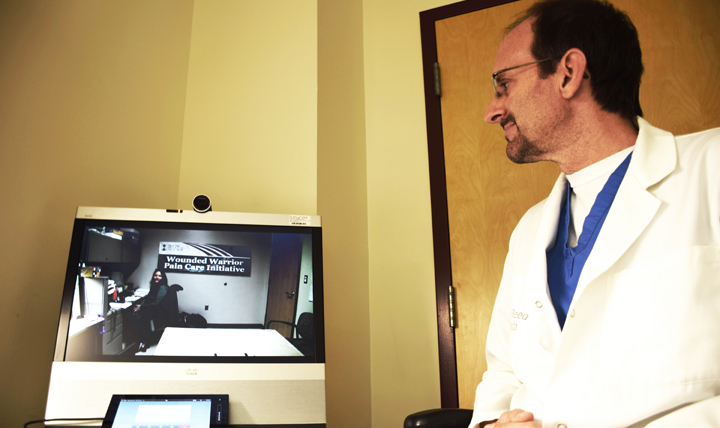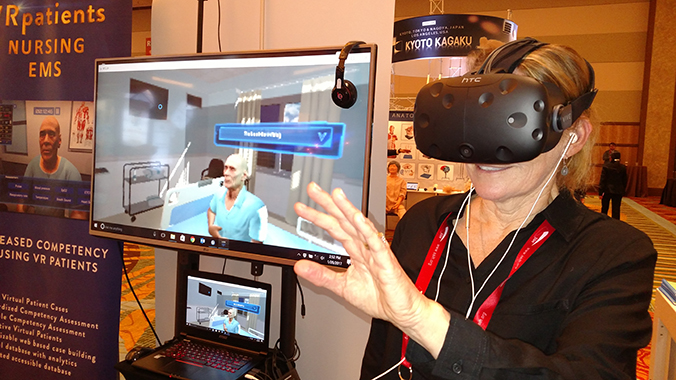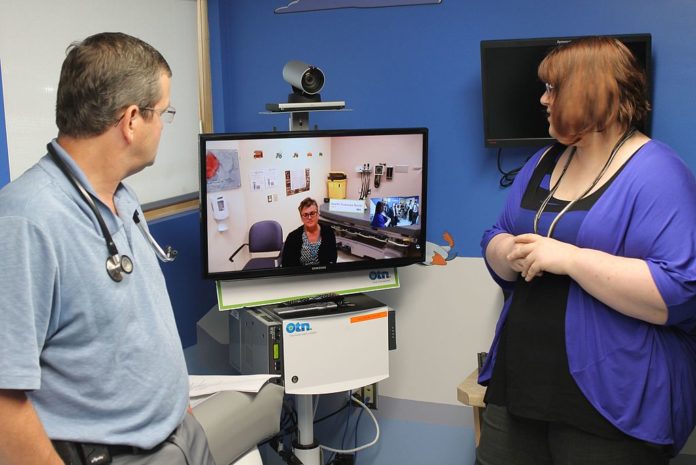The future of healthcare isn’t as far off as we imagine. In fact, we can already see the impact of technology on healthcare early as today. Artificial intelligence, virtual reality, and 3D printing are currently assisting doctors in everything from diagnostics to surgeries. Physical and mental health services are facing massive changes as technology continues to influence innovation.
Here’s what to expect for healthcare jobs of the future:
171 million Americans will have some form of chronic disease by 2030. Within that same time period, it is predicted that the U.S. will be faced with 104,000 fewer physicians than needed. In the decade leading up to this shortage, developing lasting and meaningful solutions before they happen is the key to meeting these future demands.
How Can Technology Help?

Virtual appointments with nurses, doctors, and other healthcare providers are already a popular and growing option for patients. Utilizing communication technologies, like video conferencing and mobile apps, bring healthcare providers closer to the people who need care.
- 33% of patients say that more convenient hours for appointments is a selling point for virtual care
- 25% say that the ease of use appeals to them when feeling too under the weather to physically go somewhere
- 25% say that their doctor is too far from work or home and virtual communication helps bridge the gap
Giving patients the opportunity to consult with specialists based in other cities or counties, allowing patients who may be too sick to travel the option to stay home for checkups, and acting as the first line of communication in preparation for an in-person visit make virtual healthcare an exciting new option.
In fact, 23% of patients have already visited virtually with a healthcare provider. 57% of patients who have not would be open to trying it in the future.
Virtual Reality Can Be A Great Training Tool

Along the same vein of virtual-based healthcare, VR itself is also making headway in the world of healthcare. Working as an invaluable tool for both training and treatment purposes, the VR healthcare market is may grow from $8.9 million in 2017 to $285 million in 2022.
For worker training, VR immerses healthcare providers from first responders to surgeons in hyper-realistic training scenarios. One study of radiologists showed that the physicians who viewed images of arteries in a virtual reality environment were, later on, more confident in their diagnoses of real-life splenic artery aneurysms.
In pain management, experiences in immersive virtual environments can decrease pain, anxiety, and produce relaxing effects. In exposure therapy, patients are able to experience recreated traumatic experiences, allowing them to face fears and accept their feelings in the safety of a healthcare facility.
3D Printing Could Be The Treatment Of The Future
In the years between 2010 and 2016, hospitals with on-site 3D printing facilities in the US had grown by 3200%. Used for production of personalized medications to custom prosthetic limbs, 3D printing capabilities within the walls of healthcare facilities can create virtually any medical tool from the ground up with materials like plastic or even stem cells.
3D printing in hospitals creates artificial bones on-site for reconstructive surgeries. Custom-tailored prosthetics, scoliosis braces, and supports for amputees can be made in a faster and more cost-effective way. “Organoids” are tiny organs 3d printed from stem cells that grow within a patient’s body to take over for an organ when it fails.
A concept in development known as the “polypill” can potentially reach patients with a number of conditions or illnesses that require them to take multiple prescriptions. This entirely 3D printed pill is able to hold several different kinds of drugs, varying release times, and custom dosage.
The “shrinking” of medicine via 3D printing is only the beginning and it’s nanomedicine that, though small, really packs a punch.
Some 50 nanopharmaceuticals have received FDA approval since 1995. Cancer patients may take nanomedicine doses of chemotherapy directed right at targeted tumors, rather than methods that poison the entire body. Nanomedicine also reduces the frequency of drug injections.
Technology has always been beside medical advancements every step of the way. Today, it’s these innovations that will help bring healthcare closer and make it more accessible than ever.
Learn more about healthcare jobs 2.0 from this infographic.

Source: Online Medical Care
![]()
Author Bio:
 Brian Wallace is an Infographics scholar, Founder of NowSourcing. Columnist @cmswire | @sejournal, @GoogleSmallBiz advisor, #thinkbig activist
Brian Wallace is an Infographics scholar, Founder of NowSourcing. Columnist @cmswire | @sejournal, @GoogleSmallBiz advisor, #thinkbig activist



![How Baby Boomers Will Impact The Nursing Shortage [Infographic] nursing shortage infographics](https://www.nursebuff.com/wp-content/uploads/2015/01/nursing-shortage-infographics-218x150.png)
![Are You Ready For An Online Nursing Program? [Infographic] online nursing program requirements and benefits](https://www.nursebuff.com/wp-content/uploads/2013/09/online-nursing-program-requirements-and-benefits2-218x150.jpg)
![The Anatomy of a Nursing Student [Infographic] anatomy of a nursing student](https://www.nursebuff.com/wp-content/uploads/2013/08/anatomy-of-a-nursing-student-218x150.jpg)










![Are You Ready For An Online Nursing Program? [Infographic] online nursing program requirements and benefits](https://www.nursebuff.com/wp-content/uploads/2013/09/online-nursing-program-requirements-and-benefits2-100x70.jpg)